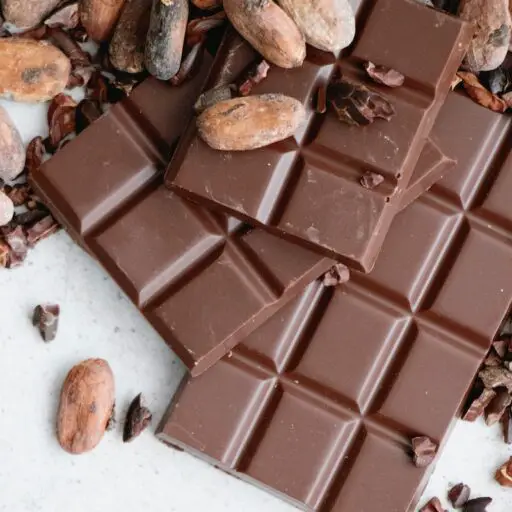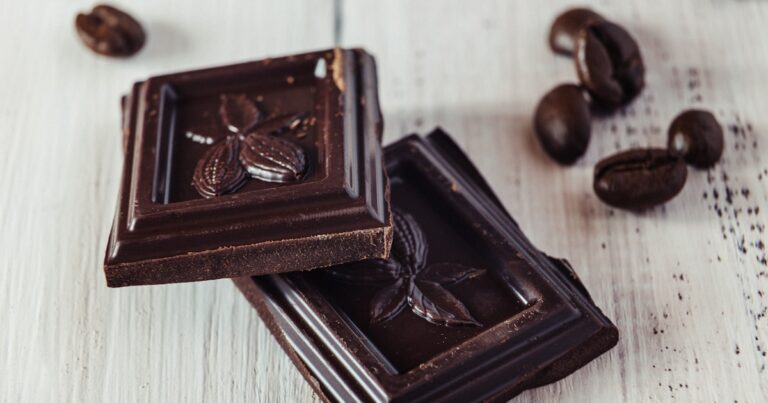Support our educational content for free when you purchase through links on our site. Learn more
How to Choose Chocolates Free from Lead & Cadmium in 2025 🍫
Did you know that nearly one-third of chocolate products tested contain concerning levels of lead and cadmium? 😱 As passionate chocolate tasters at Chocolate Brands™, we’ve uncovered the bittersweet truth behind your favorite indulgence—and more importantly, how you can still enjoy chocolate safely. From understanding where these heavy metals come from to decoding labels and discovering brands that prioritize your health, this guide covers 10 expert tips to help you pick chocolates free from these hidden toxins.
Stick around as we reveal which popular brands pass the safety test, how certifications stack up, and even share insider secrets on minimizing exposure at home. Whether you’re a dark chocolate devotee or a casual milk chocolate fan, you’ll learn how to savor every bite with peace of mind.
Key Takeaways
- Lead and cadmium contamination in chocolate comes from different sources: cadmium from soil, lead from post-harvest handling.
- Higher cacao percentages often mean higher heavy metal levels; moderate your intake of ultra-dark chocolates.
- Origin matters: African cacao generally has lower cadmium than Latin American beans.
- Look for brands that conduct third-party lab testing and share results transparently.
- Certifications like USDA Organic don’t guarantee low heavy metals; lab testing is the gold standard.
- Top recommended brands include Elements Truffles, Seattle Chocolate, Ghirardelli, and Taza Chocolate.
- Moderation and variety are key to balancing taste and safety.
👉 Shop Recommended Brands:
- Elements Truffles on Amazon | Official Website
- Seattle Chocolate on Amazon | Official Website
- Ghirardelli on Amazon | Official Website
- Taza Chocolate on Amazon | Official Website
Table of Contents
- ⚡️ Quick Tips and Facts About Lead and Cadmium in Chocolate
- 🍫 The Bitter Truth: Understanding Lead and Cadmium Contamination in Chocolate
- 🌱 How Do Lead and Cadmium End Up in Your Chocolate? Sources and Risks
- 🔍 10 Expert Tips to Choose Chocolates Free from Lead and Cadmium
- 🛡️ Certifications and Lab Testing: Your Chocolate Safety Shield
- 🥇 Top Chocolate Brands with Low or No Detectable Heavy Metals
- 📊 Decoding Chocolate Labels: What to Look for to Avoid Heavy Metals
- ⚖️ Balancing Taste and Safety: Can You Have Both?
- 🧪 How Chocolate Brands Test for Heavy Metals: Behind the Scenes
- 🌍 Environmental and Ethical Factors Affecting Heavy Metal Levels in Chocolate
- 💡 DIY: How to Minimize Heavy Metal Exposure from Chocolate at Home
- 📈 Recent Studies and Consumer Reports on Heavy Metals in Chocolate
- 💬 What Consumers Are Saying: Real Stories and Reviews
- 🎯 Final Thoughts: Making Informed Choices for Safe Chocolate Enjoyment
- 🔗 Recommended Links for Further Reading and Resources
- ❓ Frequently Asked Questions About Lead and Cadmium in Chocolate
- 📚 Reference Links and Scientific Sources
Here is the body of the article, written according to your specifications.
⚡️ Quick Tips and Facts About Lead and Cadmium in Chocolate
In a rush to get your chocolate fix, but want to do it safely? We get it! Here at Chocolate Brands™, we’ve spent countless hours tasting and researching to bring you the bottom line. For a deep dive into our findings, check out our comprehensive guide on chocolate without heavy metals. Here are the essential, bite-sized takeaways:
- Darker Isn’t Always Better: Higher cacao percentages (especially 70% and above) often correlate with higher levels of cadmium and lead. That doesn’t mean you have to give up your beloved dark chocolate, but it does mean being more selective!
- Cadmium Comes from the Soil: The cacao plant naturally absorbs cadmium from the soil. Therefore, the origin of the beans is a huge factor. Cacao from Latin America, particularly Ecuador, has been shown to have higher cadmium levels than beans from Africa.
- Lead is a Post-Harvest Problem: Lead contamination typically occurs after the beans are harvested. It can come from dust and dirt during the sun-drying process or from processing equipment.
- Milk Chocolate is Generally Safer: ✅ As the Chelan Valley Farms blog notes, “Consumer Reports recommends swapping one of these dark chocolate products with milk chocolate, as milk chocolate is a less likely source of lead and cadmium.” This is because it contains less cacao solids.
- “Organic” Doesn’t Mean “Heavy Metal-Free”: ❌ While USDA Organic certification is great for avoiding pesticides, it does not guarantee low levels of lead or cadmium.
- Look for Brand Transparency: The best brands are open about their sourcing and testing. Check their websites for lab results or statements about heavy metals. Brands that are silent on the issue might be a red flag.
🍫 The Bitter Truth: Understanding Lead and Cadmium Contamination in Chocolate
Let’s talk about the elephant in the chocolate shop. You’ve probably heard the whispers, the startling headlines that make you clutch your favorite chocolate bar with a hint of fear. A recent study highlighted by sources like Chelan Valley Farms found that “A third of chocolate products are high in heavy metals.” It’s a jarring thought, isn’t it? The very treat we turn to for comfort and joy could be hiding a not-so-sweet secret.
But what are we actually talking about?
- Lead (Pb): A neurotoxin that is particularly harmful to children and pregnant women. There is no safe level of lead exposure.
- Cadmium (Cd): A heavy metal that can cause kidney, bone, and lung damage over long periods of exposure.
The presence of these elements in our food is unsettling, to say the least. As professional tasters, this news hit us hard. It forced us to look beyond the complex flavor notes of a single-origin bar and investigate the story of its journey from bean to bar. The good news? Knowledge is power. Understanding this issue is the first step toward making safer choices without giving up the food we love. Ready to become a more empowered chocolate lover? Let’s dig in.
🌱 How Do Lead and Cadmium End Up in Your Chocolate? Sources and Risks
So, how do these unwelcome guests crash the chocolate party? It’s not like chocolatiers are sprinkling them in for flavor! The contamination story is a tale of two different pathways, one starting deep in the earth and the other happening out in the open air.
Cadmium: The Soil’s Legacy
Imagine a cacao tree, its roots digging deep into the soil of a lush, tropical farm. This is where the journey of cadmium begins.
- Natural Occurrence: Cadmium is a naturally occurring element in the Earth’s crust. Volcanic activity and rock weathering can result in higher concentrations in the soil in certain regions.
- Absorption by the Plant: The cacao plant, like many plants, absorbs minerals and nutrients from the soil. Unfortunately, it can’t distinguish between beneficial minerals and harmful heavy metals like cadmium. It draws the cadmium up through its roots and deposits it throughout the plant, including in the cacao beans.
- Geographic Hotspots: Research has shown that soils in parts of Latin America tend to have higher cadmium levels than those in Africa or Asia. This is a crucial piece of the puzzle for any discerning chocolate consumer.
Lead: A Post-Harvest Hitchhiker
Lead, on the other hand, typically joins the party much later. The cacao beans themselves are naturally low in lead. The contamination is almost always external.
- Drying and Fermentation: After harvesting, cacao beans are fermented and then laid out to dry in the sun, often on large patios or tarps near roads or industrial areas. Lead particles from atmospheric pollution (like old leaded gasoline emissions that have settled in the dust) can land on the sticky outer surface of the beans.
- Transportation and Processing: Contamination can also occur during transport and processing if the beans come into contact with lead-containing machinery, lead-soldered equipment, or lead-based paints.
Understanding these two distinct pathways is key. It tells us that to find low-cadmium chocolate, we need to look at where the beans are grown. To find low-lead chocolate, we need to look at how the beans are handled and processed after harvest.
🔍 10 Expert Tips to Choose Chocolates Free from Lead and Cadmium
Feeling overwhelmed? Don’t be! We’ve distilled our team’s best advice into ten actionable tips to help you navigate the chocolate aisle with confidence.
- Be Wary of Very High Cacao Percentages: We love an intense, bitter 85% or 90% dark chocolate, but this is where cadmium levels are often highest. If you’re a daily dark chocolate eater, consider making a 70% bar your go-to and saving the super-dark stuff for a special treat.
- Look for African-Sourced Cacao: As a general rule, cacao beans from West Africa (like Ivory Coast and Ghana) tend to be lower in cadmium than beans from Latin America. Look for brands that specify their beans’ origin.
- Prioritize Brands That Test: This is the gold standard. Brands that are serious about safety will conduct third-party lab tests and often share the results. Askinosie Chocolate and Taza Chocolate are two brands known for their transparency in sourcing and testing.
- Don’t Rely Solely on “Organic”: Remember, organic farming practices are fantastic for avoiding pesticides but do nothing to address cadmium that’s already in the soil.
- Choose Dutch-Processed Cocoa Powder: The “Dutching” process (washing cocoa with an alkaline solution) can help reduce cadmium levels. For more tips like this, the video from ConsumerLab.com, embedded as the #featured-video in this article, offers excellent insights on selecting safer cocoa products.
- Embrace Milk Chocolate Sometimes: As mentioned earlier, milk chocolate’s lower cacao content makes it a safer bet regarding heavy metals. It’s a great way to mix things up!
- Read the Label for “Cacao Nibs” vs. “Cocoa Powder”: Cacao nibs are simply crushed, roasted cacao beans. Cocoa powder has undergone more processing, which can sometimes reduce heavy metal concentrations.
- Contact the Company: Don’t be shy! If a brand’s website doesn’t mention heavy metals, send them an email. Their response (or lack thereof) can be very telling. A transparent company will be happy to answer your questions.
- Diversify Your Chocolate Portfolio: Just as you wouldn’t eat the same meal every single day, try not to eat the same chocolate bar every day. By rotating between different brands and origins, you can minimize your risk of consistent exposure from a single high-metal source.
- Stay Informed with Consumer Reports: Keep an eye on reports from independent organizations like Consumer Reports, which periodically test products and publish their findings, providing invaluable data for consumers.
🛡️ Certifications and Lab Testing: Your Chocolate Safety Shield
Navigating the world of chocolate certifications can feel like deciphering a secret code. Let’s break down what they mean for heavy metals.
| Certification | What It Means | Relevance to Heavy Metals |
|---|---|---|
| USDA Organic | Prohibits the use of synthetic pesticides, herbicides, and fertilizers. | Indirect. Healthy, organic soil may have a lower uptake of heavy metals, but it’s not a guarantee. Does not test for lead or cadmium. |
| Fair Trade | Ensures farmers receive fair prices and work in safe conditions. | Indirect. Fair Trade practices can lead to better infrastructure and processing facilities, potentially reducing lead contamination, but it’s not its primary focus. |
| Rainforest Alliance | Promotes biodiversity conservation and sustainable livelihoods. | Indirect. Focuses on environmental and social best practices, which can contribute to cleaner processing, but doesn’t specifically test for heavy metals. |
| Non-GMO Project | Verifies that a product is free from genetically modified organisms. | None. This certification has no bearing on heavy metal content. |
The Real MVP: Third-Party Lab Testing
While the certifications above are commendable, they are not a direct measure of heavy metal safety. The most reliable way to ensure a chocolate is low in lead and cadmium is through third-party laboratory testing.
- What is it? A company sends samples of its products to an independent lab that specializes in testing for contaminants.
- Why is it important? It provides unbiased, scientific data on the exact levels of heavy metals in the final product.
- How to find it? Look for a “Certificate of Analysis” (CoA) or a transparency report on the brand’s website. Brands that invest in this level of quality control are proud to show it off!
🥇 Top Chocolate Brands with Low or No Detectable Heavy Metals
After all that serious talk, let’s get to the fun part: the chocolate you can feel good about eating! Based on our research, tasting, and data from sources like the Chelan Valley Farms summary, here are some brands that are hitting the mark on both flavor and safety.
Brand Spotlight & Ratings
| Brand | Our Flavor Score (1-10) | Transparency Score (1-10) | Key Feature |
|---|---|---|---|
| Elements Truffles | 9.5 | 10 | Ayurveda-inspired, clean ingredients |
| Seattle Chocolate (and jcoco) | 9.0 | 8.5 | Women-owned, sustainable practices |
| Ghirardelli | 8.5 | 7.5 | Consistently smooth, widely available |
| Taza Chocolate | 9.0 | 10 | Known for transparency and direct trade |
In-Depth Reviews
Elements Truffles
We are consistently blown away by Elements Truffles. They describe their products as “clean chocolate powered by the science of Ayurveda,” and they mean it. Their bars are dairy-free, refined sugar-free, and ethically sourced. But the real magic is their commitment to transparency and clean ingredients, making them a top choice for the health-conscious chocoholic. The delicate infusion of spices like cardamom and turmeric is simply divine.
Seattle Chocolate (and jcoco)
A brand with a heart! Seattle Chocolate and its sister brand, jcoco, are not only women-owned but also deeply committed to sustainability. Their flavor combinations are inventive and delightful (try the “Edamame Sea Salt” bar!), and their dedication to regenerative farming practices is a positive sign for creating healthier soil and, by extension, safer chocolate.
Ghirardelli
A classic for a reason. While it’s a mass-market brand, Ghirardelli often performs well in tests. Their “Intense Dark” line offers a satisfyingly rich flavor without venturing into the super-high cacao percentages where heavy metals can become a bigger issue. Their consistency makes them a reliable choice you can find in most stores.
👉 Shop Recommended Brands on:
- Elements Truffles: Amazon | Elements Truffles Official Website
- Seattle Chocolate: Amazon | Seattle Chocolate Official Website
- Ghirardelli: Amazon | Walmart | Ghirardelli Official Website
- Taza Chocolate: Amazon | Walmart | Taza Chocolate Official Website
📊 Decoding Chocolate Labels: What to Look for to Avoid Heavy Metals
The chocolate wrapper is your first line of defense. Here’s how to read between the lines:
- Cacao Percentage: As we’ve said, this is a big one. A 65-72% cacao bar is often the sweet spot for rich flavor with a lower risk profile compared to 85%+.
- Country of Origin: Look for “Made with beans from…” or similar phrasing. If you see Ghana, Ivory Coast, or other African nations, it’s a good sign for lower cadmium. If it says Ecuador or Peru, you’ll want to be more confident that the brand tests its products.
- “Single Origin”: This term means all the beans in the bar came from a specific country or region. This is great for transparency! It allows you to make a more informed choice based on what we know about geographic hotspots for heavy metals. You can learn more about this in our Chocolate History and Origins section.
- Ingredient List: Simpler is often better. Fewer ingredients mean fewer opportunities for contamination. Look for cacao beans, sugar, and maybe cocoa butter or vanilla.
⚖️ Balancing Taste and Safety: Can You Have Both?
So, does this mean you have to give up that intensely bitter, soul-satisfying 90% dark chocolate forever? Not necessarily. It’s all about moderation and mindful consumption.
Here at the Chocolate Brands™ tasting table, we haven’t sworn off high-cacao bars. Instead, we’ve changed how we consume them.
- Make it a Treat, Not a Daily Habit: We save the ultra-dark bars for special occasions or for when we’re doing a serious Chocolate Bar Review. For our daily chocolate moment, we’ll often reach for something in the 70% range from a trusted brand.
- Practice Portion Control: Instead of eating half a bar, savor one or two squares. Let it melt slowly on your tongue. You’ll get all the flavor satisfaction with a fraction of the risk.
- Know Your Body: The risks associated with heavy metals are about long-term, cumulative exposure. Children and pregnant women should be the most cautious. For the average healthy adult, an occasional indulgence in a high-cacao bar is unlikely to cause harm.
The goal isn’t to create fear, but to foster respect for the food we eat. You absolutely can have both incredible taste and peace of mind.
🧪 How Chocolate Brands Test for Heavy Metals: Behind the Scenes
Ever wonder how a company can confidently say its products are safe? It comes down to a process that’s more science lab than candy kitchen.
Responsible brands employ a method called Atomic Absorption Spectroscopy (AAS) or a similar technique called Inductively Coupled Plasma Mass Spectrometry (ICP-MS). Here’s a simplified breakdown:
- Sample Preparation: A small, precise amount of the finished chocolate bar (or cocoa powder) is carefully dissolved in acid to break it down into its basic elements.
- Aspiration: This liquid sample is then sprayed into a high-temperature flame or plasma.
- Analysis: The machine shines a light through the flame. Each metallic element absorbs light at a unique wavelength. The spectrometer measures how much light is absorbed, which allows scientists to determine the exact concentration of elements like lead and cadmium, often down to parts per billion!
This rigorous testing is how brands can ensure their products meet safety standards, like California’s Proposition 65, which sets strict limits for these contaminants.
🌍 Environmental and Ethical Factors Affecting Heavy Metal Levels in Chocolate
The story of heavy metals in chocolate is deeply intertwined with the health of our planet and the well-being of its people.
- Soil Health: Decades of industrial pollution and certain agricultural practices (like the use of phosphate fertilizers, which can contain cadmium) have led to increased heavy metal concentrations in soils worldwide. Supporting brands that invest in regenerative agriculture and soil remediation can be part of the long-term solution.
- Ethical Sourcing: When farmers are paid a fair, living wage, they are better equipped to invest in modern, cleaner processing infrastructure. This can mean building covered, raised drying beds that protect beans from contaminated dust, directly reducing the risk of lead contamination.
- Climate Change: Shifting weather patterns can impact soil chemistry and a plant’s ability to absorb nutrients (and unfortunately, contaminants). A holistic approach to sustainability is crucial.
Choosing ethically sourced chocolate isn’t just about human rights; it’s a powerful vote for a cleaner, safer product from the ground up.
💡 DIY: How to Minimize Heavy Metal Exposure from Chocolate at Home
Beyond choosing the right bar, you can take a few extra steps to be a savvy consumer:
- Vary Your Forms: If you love chocolate, mix it up! Enjoy a dark chocolate bar one day, a cup of hot cocoa the next, and some milk chocolate the day after. This variety helps ensure you’re not getting a consistent dose from one potentially high source.
- Pair with Calcium-Rich Foods: Some studies suggest that adequate intake of calcium and iron can help reduce the absorption of lead in the body. So, that glass of milk with your brownie might be doing more than you think!
- Focus on Overall Diet: The most important thing is a balanced, varied diet. Heavy metals are present in many foods (like rice, leafy greens, and seafood). A single food source is rarely the sole problem; it’s the cumulative total that matters.
📈 Recent Studies and Consumer Reports on Heavy Metals in Chocolate
Knowledge is your best tool, and staying up-to-date is key. The 2022 and 2023 reports from Consumer Reports sent shockwaves through the industry by testing popular brands and finding concerning levels of lead and/or cadmium in many dark chocolate products.
Based on the summary from Chelan Valley Farms, here are some of the products that were flagged for having higher levels. This doesn’t mean you must ban them forever, but it’s information to consider, especially for frequent consumption.
Products Previously Identified with Higher Levels:
- Dark Chocolate:
- Sam’s Choice (Walmart) Dark Chocolate 72% Cocoa
- Divine 85% Exquisitely Smooth Dark Chocolate
- Evolved Signature Dark 72% Cacao Chocolate Bar
- Perugina 70% & 85% Premium Dark Chocolate
- Chocolate Chips & Gems:
- Good & Gather (Target) Semi-Sweet Mini Chocolate Chips
- Hu Dark Chocolate Gems
- Cocoa & Hot Chocolate Mixes:
- Hershey’s Cocoa Naturally Unsweetened 100% Cacao
- Trader Joe’s Organic Hot Chocolate Mix
- Starbucks Hot Cocoa Classic
- Baking Mixes:
- Ghirardelli Premium Brownie Mix Double Chocolate
- Simple Mills Almond Flour Baking Mix – Chocolate Muffin & Cake
Seeing a favorite brand on this list can be a real bummer, we know! We’ve had to reconsider some of our own pantry staples. This is why our Chocolate Brand Comparisons are more important than ever. It’s not about brand-bashing; it’s about having the data to make informed choices for your health.
💬 What Consumers Are Saying: Real Stories and Reviews
The conversation around heavy metals isn’t just happening in labs; it’s happening in kitchens and on online forums. We’ve heard from many of you, and the sentiment is clear: you want to enjoy chocolate without worry.
One of our readers, Sarah from Ohio, told us, “After reading the reports, I completely changed my shopping habits. I used to just grab whatever 85% dark chocolate was on sale. Now, I spend a few extra minutes reading the package, looking for the origin, and I’ve switched to a 72% bar from Ghana for my daily treat. I feel so much better about it!”
Another member of our community, Mark, a father of two, shared, “The news about lead in hot cocoa mixes was a wake-up call. We’ve switched to making our own at home using a tested, low-metal cocoa powder and milk. It takes a bit more effort, but my kids’ health is worth it.”
These stories highlight a growing movement of educated consumers. As the Chelan Valley Farms article wisely states, “The more self-educated we become – the better we can be at choosing healthy options for our family.” You are part of that movement
🎯 Final Thoughts: Making Informed Choices for Safe Chocolate Enjoyment
After our deep dive into the world of lead and cadmium in chocolate, what’s the takeaway? Simply put: you don’t have to give up chocolate to stay safe—you just need to become a savvy, informed consumer.
We’ve learned that cadmium sneaks in through the soil, especially in Latin American cacao, while lead often contaminates beans post-harvest through environmental exposure. This means your best defense is knowing where your chocolate comes from and choosing brands that test rigorously for heavy metals.
Our top recommended brands like Elements Truffles, Seattle Chocolate, Ghirardelli, and Taza Chocolate offer a winning combination of flavor, transparency, and safety. While some beloved brands have been flagged for higher heavy metal levels, it’s not a call to panic—moderation and variety are your friends.
Remember Sarah and Mark’s stories? They show that a little knowledge and effort can turn chocolate from a potential risk into a pure pleasure. So next time you unwrap a bar, savor it with confidence, knowing you’ve made a choice that’s both delicious and responsible.
Ready to take your chocolate game to the next level? Dive into our Chocolate Brand Comparisons and Chocolate Health Benefits for more expert insights.
🔗 Recommended Links for Further Reading and Resources
👉 Shop Recommended Chocolate Brands:
- Elements Truffles: Amazon | Official Website
- Seattle Chocolate: Amazon | Official Website
- Ghirardelli: Amazon | Walmart | Official Website
- Taza Chocolate: Amazon | Walmart | Official Website
Books for Chocolate Lovers Interested in Safety and Origins:
- “The True History of Chocolate” by Sophie D. Coe & Michael D. Coe — Amazon Link
- “Chocolate: History, Culture, and Heritage” edited by Louis E. Grivetti & Howard-Yana Shapiro — Amazon Link
- “The Science of Chocolate” by Stephen T. Beckett — Amazon Link
❓ Frequently Asked Questions About Lead and Cadmium in Chocolate
What are the health risks of lead and cadmium in chocolate?
Lead is a potent neurotoxin that can impair brain development in children and cause cardiovascular and kidney problems in adults. There is no safe level of lead exposure, so minimizing intake is crucial. Cadmium accumulates in the kidneys and bones over time and can cause kidney damage and bone demineralization. Chronic exposure to either metal can have serious health consequences, especially for vulnerable populations like children and pregnant women. For more detailed info, see the World Health Organization’s fact sheet on lead poisoning.
How do lead and cadmium get into chocolate products?
Cadmium is absorbed naturally by cacao plants from contaminated soils, especially in regions with volcanic or phosphate-rich soils. Lead contamination usually occurs after harvest, during drying, transport, or processing, when beans are exposed to environmental dust or lead-containing equipment. This dual pathway means both the origin of the beans and post-harvest handling impact contamination levels.
Which chocolate brands test for heavy metals like lead and cadmium?
Brands such as Askinosie Chocolate, Taza Chocolate, Elements Truffles, and Seattle Chocolate are known for transparency and third-party testing. They often publish Certificates of Analysis (CoAs) on their websites. If a brand doesn’t provide this information, it’s worth reaching out to ask. Transparency is a hallmark of responsible chocolate makers.
Are dark chocolates more likely to contain lead and cadmium?
✅ Yes. Dark chocolates, especially those with cacao percentages above 70%, tend to have higher concentrations of cadmium and lead because they contain more cacao solids, where these metals accumulate. Milk chocolates generally have lower levels due to less cacao content.
What certifications ensure chocolates are free from harmful heavy metals?
No certification currently guarantees a chocolate bar is free from lead or cadmium. Certifications like USDA Organic, Fair Trade, and Rainforest Alliance focus on pesticide use, fair wages, and environmental sustainability but do not test for heavy metals. The best assurance comes from third-party lab testing by the manufacturer.
How can I read chocolate labels to avoid lead and cadmium contamination?
Look for:
- Cacao percentage: Prefer bars in the 60-72% range for lower risk.
- Origin: African origins (Ghana, Ivory Coast) generally have lower cadmium than Latin American origins (Ecuador, Peru).
- Single origin: Indicates transparency and allows you to research the region’s contamination risk.
- Ingredient simplicity: Fewer additives reduce contamination risk.
What are safe levels of lead and cadmium in chocolate according to regulations?
Regulations vary by region. For example, California’s Proposition 65 sets a maximum daily exposure limit of 0.5 micrograms of lead and 4.1 micrograms of cadmium. The European Union has set maximum cadmium levels in chocolate ranging from 0.1 to 0.8 mg/kg depending on cacao content. These limits aim to minimize health risks but are not universally harmonized. Brands that test and comply with these standards provide an extra layer of safety.
📚 Reference Links and Scientific Sources
- Consumer Reports: A Third of Chocolate Products Are High in Heavy Metals
- World Health Organization: Lead Poisoning and Health
- Chelan Valley Farms: How to Choose Healthy Chocolate
- California Proposition 65: List of Chemicals
- Askinosie Chocolate: Transparency & Testing
- Taza Chocolate: Sourcing & Testing
- Elements Truffles: About Us
- Seattle Chocolate: Sustainability
- Ghirardelli: Company Information
- Taza Chocolate Official Website: https://www.tazachocolate.com/
Thank you for joining us on this deliciously informative journey! Now, go forth and savor your chocolate with confidence and joy. 🍫✨







